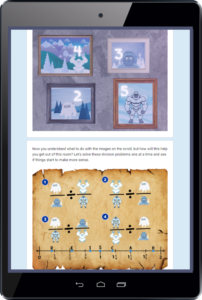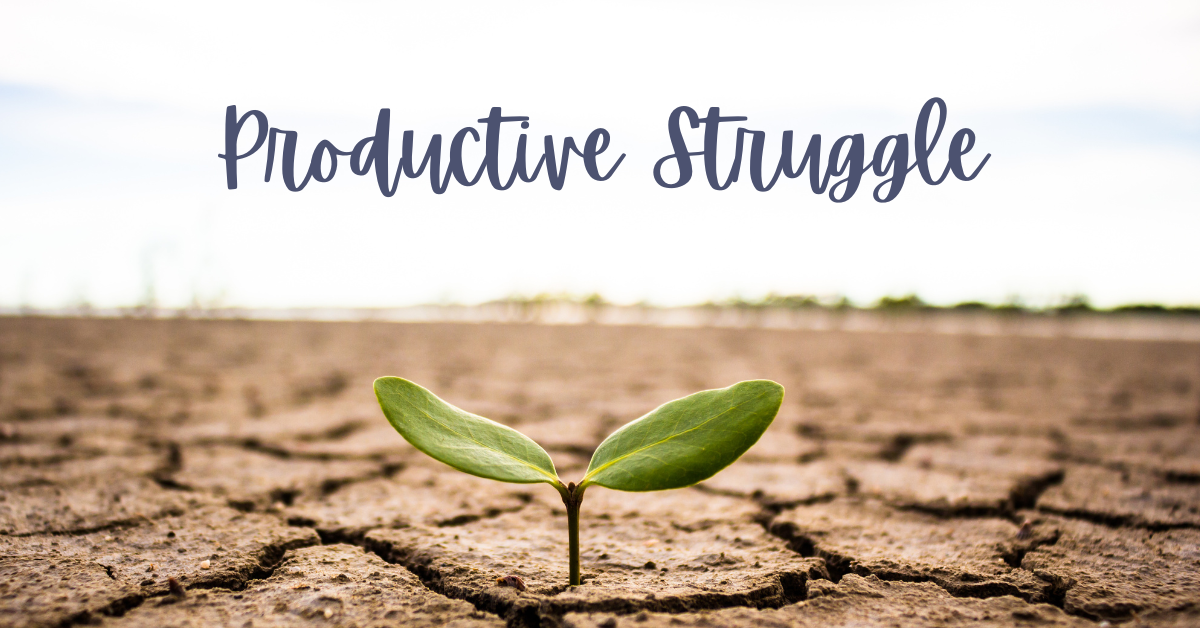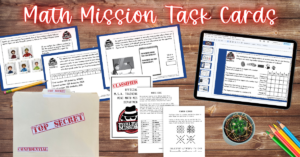It always fascinates me to see how students respond to new and challenging problems. Some students dive in, try different methods to solve a problem, and persevere until they achieve success, or at least make progress. Others look at the challenge and decide almost immediately that it’s too hard. They become disengaged and give up before they even begin. How can we get these students to develop resilience and become problem solvers? Productive struggle is an important concept in teaching math and it can be beneficial for students from early elementary through adulthood. We don’t want our students to give up easily or become dependent on teacher help, but instead we want to see them develop critical thinking skills and a deeper understanding of mathematical concepts. As educators, we need to find the balance in our classrooms of promoting productive without allowing students to become frustrated to the point of giving up.
When children (or adults) are faced with a difficult problem or concept, they may feel overwhelmed and unsure of where to begin. This is where productive struggle comes in. It can be tempting for teachers to jump in and offer quick solutions to students who are struggling, but a classroom where the teacher steps back and allows students the time to puzzle through problems will function differently. Rather than giving up or relying on the teacher for help, students are encouraged to work through the problem on their own, using their critical thinking skills and perseverance to find a solution. In developing escape rooms for classroom use, I strive to find the balance between making methods and solutions too obvious and requiring students to think outside of the box and use critical thinking skills. Allowing for collaboration also helps students gain confidence to work through their struggles without feeling defeated.
 One way to promote productive struggle in the classroom is through problem-based or project-based learning. This approach involves giving students real-world problems to solve, rather than just providing them with formulas or equations to memorize. By actively engaging with the material, students are more likely to develop a deeper understanding of the concepts involved. Escape rooms and PBL projects have several similarities. Both activities can be used to teach critical thinking and problem-solving skills, however educational escape rooms are more of a fun and interactive activity, whereas PBL is a more structured approach to learning. There is an end in sight, and students are often willing to work through difficult puzzles knowing that the reward of escape awaits. Great Classroom Escape’s math activities include engaging back-stories that make completing the tasks more enticing to students.
One way to promote productive struggle in the classroom is through problem-based or project-based learning. This approach involves giving students real-world problems to solve, rather than just providing them with formulas or equations to memorize. By actively engaging with the material, students are more likely to develop a deeper understanding of the concepts involved. Escape rooms and PBL projects have several similarities. Both activities can be used to teach critical thinking and problem-solving skills, however educational escape rooms are more of a fun and interactive activity, whereas PBL is a more structured approach to learning. There is an end in sight, and students are often willing to work through difficult puzzles knowing that the reward of escape awaits. Great Classroom Escape’s math activities include engaging back-stories that make completing the tasks more enticing to students.
Another strategy to guide students into “struggling productively” is to encourage them to explain their thinking. When students are able to explain how they arrived at a solution, it helps them to solidify their understanding and also allows the teacher to identify areas where the student may need additional support. This can also be accomplished peer-to-peer. As one student explains their problem solving method to another, their understanding of the concept is solidified, and their classmate’s thinking about a problem may be stretched as they learn from a peer.
It’s also important to remember that productive struggle is not always comfortable or easy. Students may become frustrated or discouraged at times, but it is important to remind them that this is a normal part of the learning process and that persistence and determination will pay off in the end. I always tell teachers not to jump in too quickly to “rescue” students. Allowing the “Aha!” moments is always rewarding, and encourages students to persevere through difficult challenges in the future.
Productive struggle is an important concept in education that can help students develop critical thinking skills and a deeper understanding of mathematical concepts. Teachers can promote productive struggle through problem-based learning and encouraging students to explain their thinking. Even though it may be frustrating or uncomfortable, it is a necessary and valuable part of the learning process.





